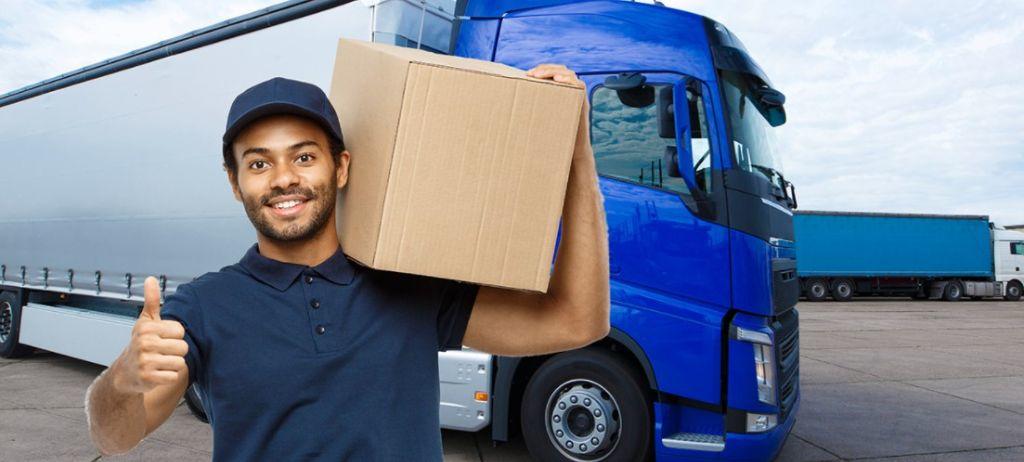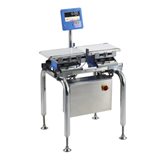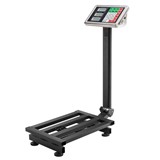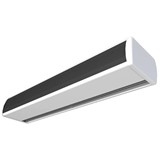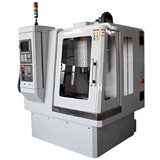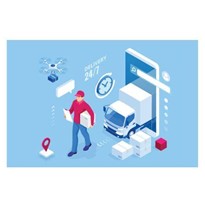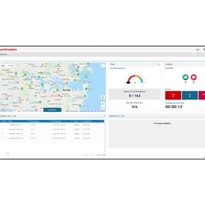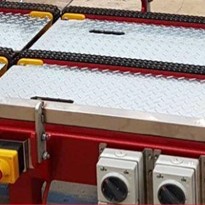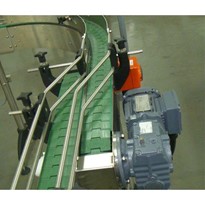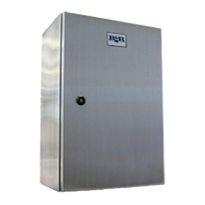This FAQ gives a clear insight into the concept of last mile delivery, how it works, challenges, opportunities, and future trends. Take a look:
- Definition of last mile and steps involved in it.
- Problems of last mile delivery.
- Options to be explored such as in-house fleets, local carriers, crowdsourced marketplaces, etc.
- Tips to combat challenges of last mile and seize on opportunities.
- How technology is paving the way for channel of evolution for last mile deliveries.
- Reasons to hire last mile carriers and how you should select a suitable one as per your business needs.
- How last mile has kept pace with technology and why you need last mile software.
- Emerging last mile trends in 2021.
- Reasons why last mile delivery is so costly.
- Know about the benefits of last mile delivery, what is last mile carrier tracking, and expenses associated with it.
- Role of last mile in e-commerce industry.
- Envisioning last mile deliveries in post-Covid era.
What is last mile delivery?
To put it in a nutshell, the delivery process taking place from the distribution centre to the end-user is known as last mile delivery. The goal is to get the package to customers in the shortest time possible sans any delays, which makes the “last mile”, a crucial aspect of the logistics and supply chain industry. When implemented correctly, it results in a high level of customer satisfaction and saves time and money.
What are the steps involved in last mile delivery?
This is what happens when last mile delivery is initiated:
- A centralized system maintains detailed records of orders and requests. Both sender and end-user are involved in this step.
- A tracking number/link is generated so delivery status can be monitored in real-time.
- Businesses dispatch orders to the transportation hub as fast as possible, so they can be delivered to recipients.
- Orders are sorted, and then packages are delegated to delivery personnel based on routes and addresses of recipients.
- Orders are loaded into vehicles. Each order is individually scanned and their status updated. It ensures they can be monitored in transit, so the chances of goods getting lost or misplaced drastically reduced.
- The package is delivered to the final destination, while signatures, proof of delivery, barcode scanning, and other information is recorded. This step verifies the delivery and marks the order as “complete”.
What are the problems in last mile delivery?
Even though the last mile concept sounds simple, there are a host of issues involved when it comes to successful execution. Take a look:
- Delivering small quantities to numerous businesses and households – you need more manpower to cover a wide area, and it doesn’t add much to revenue as orders are relatively small.
- Navigating through congested areas and figuring out how to reach destinations that are miles apart, without delays – no one wishes to deal with angry customers complaining that their shipment is not on time.
- Optimizing routes during bad weather such as rain, storm, and snow – they can cause unprecedented delays with roads being blocked.
- Keeping overall costs (fuel, maintenance, refunds & returns, etc.) down. Fuel expenses shoot up due to idling and poor driver behaviour, while the company has to bear the cost of returning or exchanging defective/damaged items. The cost goes up if a refund has to be provided.
- Meeting customer expectations with same-day deliveries.
- Type of merchandise being shipped – perishable goods, groceries, and pharmaceuticals are often kept within particular temperature ranges, while bulky items like furniture and appliances require more manpower.
- Keeping up with technology – a common problem with several global transportation and logistics companies is the use of obsolete and outdated technology for last mile, which results in delays and high shipping costs.
What are the various options that can be explored for last mile?
Create your own fleet “in-house”
This option is convenient but comes with several expenses, so not many can afford it. Building and operating an in-house fleet can be exhausting and time-consuming, which shifts focus from other core objectives. Companies mostly turn to third parties to fulfil delivery needs, but delivery experiences are a major aspect of customer’s interaction with your brand. Last mile providers have to align with the brand image as viewed by customers but few services on the market can make it happen.
Talk to carriers and postal services
When you let another company control the delivery process, flexibility goes for a toss, as your delivery experience needs to fit into their system (rather than the other way round). Moreover, you have to be dependant on them during the busiest times of the year, when reliable and timely deliveries are vital for ensuring customer satisfaction. Their infrastructure is already stretched to capacity at this time, so ticking all the boxes of a successful delivery might not be possible.
Local couriers work for small scale operations
You have to take the size of the item into account, because these are small establishments with a restricted number of vehicles, and the vehicle size is limited as well. Not every company has the capacity to scale as per demand, so you might have to engage multiple delivery service providers, which is a logistical nightmare while costs go up.
Variable marketplaces that are “crowdsourced”
These services ensure quick and on-demand deliveries at variable costs. The trucks aren’t owned by these companies, so they can scale and adapt as and when required. These marketplaces customize the delivery experience for your brand, so you have more control over the process. They offer features such as web/cloud, real time tracking and on-the-go apps.
How can we address last mile delivery challenges and identify opportunities?
Did you know that 75% of companies in the U.S. have reported that the pandemic has disrupted their supply chain? The major reason is the shift in consumer buying behaviour, with a massive uptick in online sales.
Stores that have a physical presence turned into fulfilment centres
Brick and mortar retailers operate stores spread across an area or even a country, along with warehouses and distribution centres for keeping stores stocked. Online orders have changed the entire landscape as retailers have to fulfil single orders that come with online sales, which have a different packing and fulfilment process as compared to working with cases or pallets. Speed of delivery is a crucial factor here, so it is helpful if stores can hold inventory close to customers, whether they shop in person or online. This makes same-day local deliveries more feasible. Turning a part of your stores into fulfilment centres for online orders is also less expensive than getting more warehouse space. Accenture has stated by 2023, that more than half of e-commerce purchases will be delivered from local inventory.
Retailers specializing in e-commerce have to offer fast and low-cost deliveries
Warehouses and fulfilment centres for “e-commerce only” retailers are designed just for e-commerce orders. Since they use postal services or traditional carriers to fulfil orders, the customer experience isn’t stellar. Carriers are often unable to meet timelines for local deliveries, or handle larger and bulkier items. When deliveries aren’t as per expectations, customers blame the company they ordered from (not the delivery company). Deliveries not only have to be fast, efficient, and low cost, but real time tracking needs to be available too.
B2B and B2C manufacturers communicating directly with customers
Even though manufacturers engage customers via retailers and wholesalers, some of them transact directly with customers now. Due to direct communication, they are able to build a stronger rapport and keep them in the loop about promotions, company information, and new products. They can maintain histories of purchases, to predict buying behaviour, and thus tailor communications for each customer. Deliveries have to cost-effective, fast, reliable, and scalable, so the delivery model is a key factor here. Building an in-house fleet is costly, shifts focus, and is tough to scale rapidly, while third party delivery models might not meet expectations.
B2B suppliers creating in-house fleets
Business customers want the process of purchasing products for their operations to be streamlined and efficient. Suppliers often build their own fleets, but they face the same problems as businesses that build fleets dedicated to consumer orders, including steep initial investments and sizable ongoing expenses. Sufficient resources have to be allocated to the fleet, but even with a substantial investment, it isn’t possible to meet every delivery requirement, so the risk of disappointed customers remains.
How can technology aid in channel of evolution for last mile delivery?
As mentioned above, the Covid-19 pandemic has led to a surge in online shopping, hence last mile deliveries have become all the more important. That is why, it is imperative to shift towards an omni-channel strategy. The last mile network design is moving from a conventional centralized model to a more decentralized version. Be it via crowdsourced platforms, electric vans, drones, or micro-fulfilment centres, the last mile channel is diversifying.
Using malls and storefronts for micro-fulfilment
As mentioned, malls and storefronts can be used as micro-fulfilment centres. Nowadays, retailers often use stores to fulfil orders with 1-2 hour delivery time frames, while using backrooms for same-day deliveries. This is a lucrative option as it involves leveraging existing assets. Since these properties are situated near their customer base, deliveries can be sped up.
Scalable platforms that are crowdsourced
Crowdsourced delivery platforms are scalable and can be adapted to meet changes as per demand. Firms of all sizes will find this model helpful since no upfront investment is involved.
Live tracking and optimizing the best routes
Smart tracking and route optimization solutions help companies improve efficiency when it comes to completing deliveries. Using technologies like artificial intelligence and machine learning, they optimize routes and reduce delays.
High-tech gadgets like drones
Drones can work wonders when it comes to speeding up deliveries, while also providing the contactless delivery option -(important in the post-Covid era). With the advent of more sophisticated technology, the number of last-mile warehouses and delivery speed of drones will increase, resulting in decentralized last-mile delivery networks. Drones are especially helpful in rural areas where distances between destinations lead to mounting expenses.
Battery-operated electric powered vehicles
Electric vehicles minimize fuel and maintenance costs, improve driver safety, and are eco-friendly. Customers are looking to make sustainable choices these days, so this can be an excellent option for companies investing in green transportation practices.
Nascent technology like wheeled robots
Wheeled robots carry several packages at a time and operate mostly on sidewalks rather than roads. They are gradually entering the marketplace as “personal delivery devices”.
Deliveries being picked up by customers via click to collect
This is an option where consumers pick up their deliveries after the items have been deposited at parcel lockers. The failure rate of deliveries is nil, while total delivery time is also greatly reduced.
Why should you hire a last mile carrier?
Companies need to meet customer expectations perfectly when it comes to delivery, or they lose the edge over competitors. Orders have to be delivered to satisfaction every single time, irrespective of location, type of goods, or time of year. If you don’t partner with a last mile carrier, you will face hurdles during same-day delivery or while adhering to timelines for faster delivery. Most customers don’t return after one bad delivery experience, so you can’t drop the ball on this. Partnering with a credible last mile delivery partner ensures your deliveries are on time, reliable, and build on brand loyalty.
How to select a suitable last mile delivery partner?
When choosing a last mile delivery partner, you need to keep the following points in mind:
- Ability to scale as and when required – The delivery solution needs to align with company growth.
- Cost-effectiveness – Minimize ongoing costs related to fuel, maintenance, idling, lost or misplaced goods, returns, refunds & exchanges, speeding & parking fines, etc.
- Customer Satisfaction – The company needs to measure customer satisfaction levels, monitor and track customer reviews, and set benchmarks for accountability.
- Trained Personnel – Drivers have to be thoroughly trained to represent your brand and interests.
- Service Quality – They have to meet expectations when it comes to accuracy and speed of delivery. Moreover, they should prioritize all clients equally, and have an expert available to assist with all kinds of queries.
- Use of Latest Technology – They should offer features such as real time tracking and notifications, predictable pricing, analytics, and so on. Delivery details such as real time status of the shipment and ETA of delivery need to be available to customers.
- Driver Safety – They should promote safe driving behaviour so the delivery experience isn’t hampered due to unnecessary delays or accidents that could have been averted. Adherence to all Covid-19 safety protocols to curb the spread, need to be maintained as well.
How does last mile help in the era where technology is constantly evolving?
The introduction of technology in the retail sector has completely changed the game as it has led to fierce competition among e-commerce companies. About a couple of decades back, shipping and deliveries took around 6 to 8 weeks, but now one wants to wait that long today. In fact, people expect same-day delivery to be free of cost, or at a very nominal rate. Last mile delivery is the key to staying ahead of competition, so retailers have adapted their delivery model accordingly.
Why do you need advanced last mile software to complete last mile deliveries successfully?
Last mile delivery software can make the process faster and more efficient than ever, while bringing down costs at the same time. Take a look:
- Route mapping – Discover the most efficient routes after factoring in traffic, location, capacity, and time under consideration, to minimize total delivery time.
- Automatically dispatching orders – Tackle the on-demand orders and priority assignments with ease.
- Real time tracking – Make the delivery process transparent by providing real time updates of the shipment to customers, so they know exactly when it would arrive and who will deliver it.
- Maintain proof that a delivery is successful – Mark a delivery as “complete” via in-app signatures, photos that show delivery executives placing the packages on doorsteps, along with notes, and barcodes.
- Improve real time visibility – Maximize fleet visibility by pinpointing exact location of vehicles to check how many are idling. Better visibility also reducing theft, spoilage, and pilferage.
- Create reports – Maintain detailed data and records that help you take insight-driven business decisions.
What are the last mile delivery trends in 2021?
According to a report by Digital Commerce 360, consumers spent a whopping $861.02 billion in online shopping in the year 2020! The 44% growth is a massive increase as compared to last year.
Contactless delivery
The pandemic has made increased the need for contactless delivery due to safety concerns. Last mile carriers have adapted with digital solutions like Electronic Proof of Delivery software (e-POD) and digital payments to minimize contact, which has to continue.
Drones and delivery Bots
Drones, robots, self-driving vehicles, and autonomous delivery bots will play an integral role in completing last mile deliveries.
More urban warehouses
Companies have to build warehouses, hubs, and fulfilment centres closer to cities, as more customers start demanding same-delivery. It not only reduces transit time, but makes access to delivery agents and labourers much easier
Smart tracking
Retailers and logistic companies are exploring advanced technologies such as location intelligence (LI) that keeps customers informed about the exact location of an item in transit and offers more visibility. Features like real-time tracking, route optimization, and visibility, among others, are helping to complete deliveries successfully and improve fleet management.
Quicker fulfilment
Last mile carriers are working harder to scale their delivery model to offer services like one-day and same-delivery – shippers will focus on logistics and move merchandize faster.
Carrier becomes salesman
Studying a customer’s buying behaviour reveals their likes and dislikes, which has triggered the concept of mobile warehousing. The driver or carrier will load products that weren’t ordered by the customer, but which they are likely to buy. This helps them to upsell while delivering.
Why is last mile delivery costly?
Last mile delivery is quite pricey for several reasons such as:
- More stops resulting in more idling and downtime.
- Lower average speeds that mean extra time on road and fewer miles per gallon.
- Failed deliveries due to defective goods being delivered or items lost in transit.
- Complex routes that lead to more out-of-route miles.
- Returns, refunds, exchanges, and discounts.
What are the benefits of last mile delivery?
- Flexibility – Customers can tweak the time and location of delivery as per preference, which improves overall satisfaction.
- Boosts productivity and scalability – Eliminates unnecessary idling and unplanned diversions, thus increasing productivity. It becomes possible to quickly on-board any third party executive if any of the in-house capacity gets exhausted.
- Dynamic routine – To ensure faster deliveries, routes are optimized in real time based on traffic congestion, weather conditions, one-way windows, delivery urgency and so on.
- More control – It means better end-to-end control of delivery operations by gaining total visibility right from the time a customer places the order.
- Adds to revenue – Last mile delivery software improves fleet productivity, optimizes routes, scales your business, enhances customer satisfaction and loyalty, reduces fuel consumption, minimizes fleet management expenses, and increases customer retention.
What is last mile carrier tracking?
The process of transporting a package from a hub to a specified destination in the fastest and most cost-effective manner is known as last mile delivery. Last mile carriers are the shipping companies transporting parcels or packages to customers. They are also called delivery service providers to include local or regional courier companies too. Their job is to complete the delivery, while boosting efficiencies and reducing last mile. Business platforms should display the necessary information, while providing an exceptional delivery experience. Last mile carrier tracking software should be available for driver tracking, ETA, feedback about experience, etc.
What is the cost of last mile delivery?
Capgemini Research reveals that companies unable to reduce last mile delivery costs have experienced a decline in profit by 26% in 3 years! Last mile delivery is the most expensive part of the fulfilment chain because it involves numerous costs such as:
- Fuel – Delivering orders to sparsely populated locations, engine idling, poor driving behaviour, fulfilling same-day deliveries in crowded urban areas, etc. contribute to fuel costs.
- Refund & Replacement – When orders are delayed or they fail, customers expect at least a partial refund, at least (if not full). Companies have to bear the expenses of free shipping, failed deliveries and late deliveries with refund costs. Sometimes items get damaged in transit, so the companies have to provide a suitable replacement and arrange a pickup so the defective product can be returned. This involves reverse logistics costs.
- Shortage of Labour – There is dire shortage of qualified drivers, so logistics companies have to bear more in terms of wages.
- Going Green – Congestion and emissions as a result of e-commerce delivery is creating enormous pressure on city traffic patterns. At the World Economic Forum, 2020, it has been predicted that urban last mile delivery emissions will shoot up by a whopping 30% in 100 cities worldwide by 2030!
- Maintenance Issues – If your truck breaks down on a busy day, you have to send in the vehicle for maintenance ASAP, which in turn affects deliveries and leads to mounting expenses.
What is e-commerce last mile?
With the Covid-19 pandemic swarming every country, the e-commerce industry has been caught unawares. One of the major challenges brought on by this boom in online purchases, is the last mile delivery process. Last mile delivery in e-commerce is the last leg of a shipment’s movement before reaching the final destination. The movement is the crucial factor here, and the last phase of delivery is referred to as the “lock-in” period for your customer.
Since consumer expectations for quicker delivery and more user-friendly options have gone up, new expectations for fulfilment speed, cost and convenience are emerging, which means competition has become extremely fierce. For example, Amazon launched same-day deliveries for customers subscribing to Amazon Prime, in early 2019. However, the increase in shipping costs affected the profits – that much was clear by October of that year. Unfortunately, this is a catch-22 situation that e-commerce companies must deal with. When competition intensifies, retailers and marketplaces not only have to offer better delivery costs, but convenient and quick last mile delivery and fulfilment options as well.
What is the future of last mile in the post-Covid era?
Due to the sudden increase in online shopping because of the Covid-19 wreaking havoc, has caused problems in the logistics industry has been hit with problems such as lack of resources, prioritization of orders and dispatching them accordingly, and last mile delivery costs going up. In the post-Covid era, there will be a lot of changes when it comes to last mile delivery services, such as:
- Volumes of orders are going to rise, while more customers demand same-day deliveries.
- For continued safety of the consumer and delivery personnel, “contactless delivery” will become the new normal.
- Operational scalability has to go up in order to meet demands.
- Focus will shift to fine-tuning the efficiency of last mile model, and enhancing customer experience.
Conclusion:
As is evident, last mile delivery plays an integral role in the logistics and e-commerce landscape, so companies have to adopt last mile best practices and works towards solutions that help to provide relevant delivery options and services to their customers. They have innovative technologies at their disposal to boost the delivery process as per requirements.


